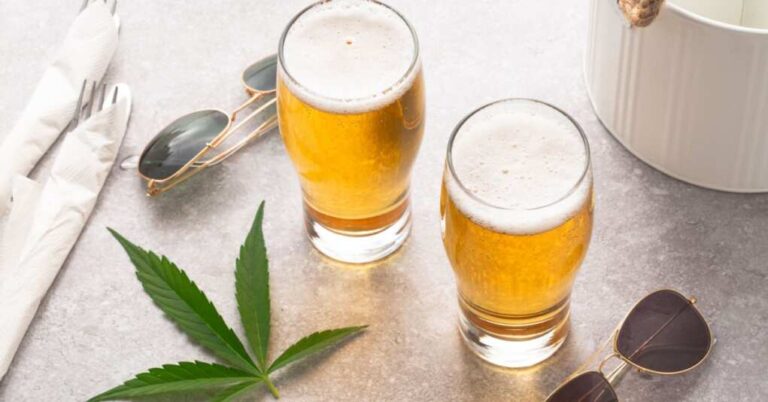
Turns Out People Would Rather Relax With a Toke and a Smile Instead of Knocking Back a Cold One
With marijuana coming up for various forms of legalization in the 2024 election, many are wondering what that will mean for the economy. As many of the states who already have recreational programs can attest, the benefits of going recreational are huge. Now, a Canadian study shows how much it has changed Canadian drinking habits.
This groundbreaking study involved multiple researchers from the University of Manitoba, the Memorial University of Newfoundland, and the University of Toronto. They discovered a massive change in alcohol consumption.
“Canada-wide beer sales fell by 96 hectoliters per 100,000 population immediately after non-medical cannabis legalization and by 4 hectoliters per 100,000 population each month thereafter for an average monthly reduction of 136 hectoliters per 100,000 population post-legalization.”
In American units, this translates to beer consumption dropping by 2,500 gallons per 100,000 people following legalization. It fell by another 105 gallons per month and is now down by more than 3,500 gallons per month. This amazing drop in alcohol consumption is a complex one, though.
Their research shows that spirits sales remained steady, as they did with bottled beer. Instead, there was a major falloff in cans and kegged beer sales. In essence, “One possible explanation is that cans may be preferred to bottle in the context of individual consumption at home due to the increasing popularity and availability of cans as well as the better taste and drinking experience that they offer. Thus, as cannabis substitutes at-home beer consumption, we find a substitution of cannabis for canned beer but not for bottled beer.”
Tax-wise, Canada generated more revenue from marijuana ($660 million) than from the combination of wine ($205 million) and beer ($450 million) sales.
Results like these have been repeated across the US, too. In Michigan, marijuana sales were higher than beer, liquor, and wine combined for FY 2023. Just across Lake Michigan in Illinois, The Prairie State brought in $451.9 million, $135.6 million more than alcohol. Back in 2022, Colorado had more income from marijuana than alcohol or tobacco, and damn near more than they had combined. Both Arizona and Washington State reported similar metrics.
Simply put, marijuana and its non-psychoactive sister hemp are the cash crop the American farmers and people not only want but that our economy needs. As conservatives, we must ensure the economy has what it needs not only to grow but thrive. It’s time to embrace science and finances, follow the money, and get the country back on track and healed from years of prohibition.
With raw materials like wood pulp for paper products, and concrete becoming prohibitively expensive, we can pivot to hemp for paper and hempcrete. Grown, handled and processed in similar ways, the yields per acre are significantly higher than timber. It requires fewer steps to a final product than cement or concrete. This means faster and safer home construction at a lower cost.
Coming at a time when more and more Americans cannot afford to buy a home, this wonderous plant provides us a way to make the cornerstone of the American dream more achievable than ever. One of the few “green” initiatives with no implicit downside, using marijuana or hemp-related products in the construction of a home is crucial. The new build or expansion can also lead to lower heating and cooling bills due to its natural fibers.
Being able to unwind after a long day with a toke and a smile is something Americans have been doing largely in secret for years. While many would instead opt for a drink due to laws, this Canadian study shows just what kind of difference legalization can make. Given the levels of taxation and fees the US is notorious for imposing on such vices, marijuana can be a literal gold mine.
If we allow companies to advertise it like we do beer, the advertisements would not only drive sales to unprecedented levels, but it could expose a whole new industry to parts of the US that have yet to embrace it. In Texas, cattle farmers could grow it as a way to heal the charred remains of their cattle farms. While it won’t replace what was lost to the wildfires, it can help get them back on their feet and back to raising cattle.
